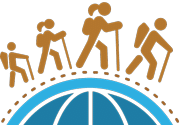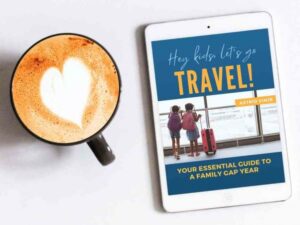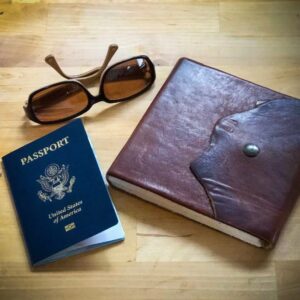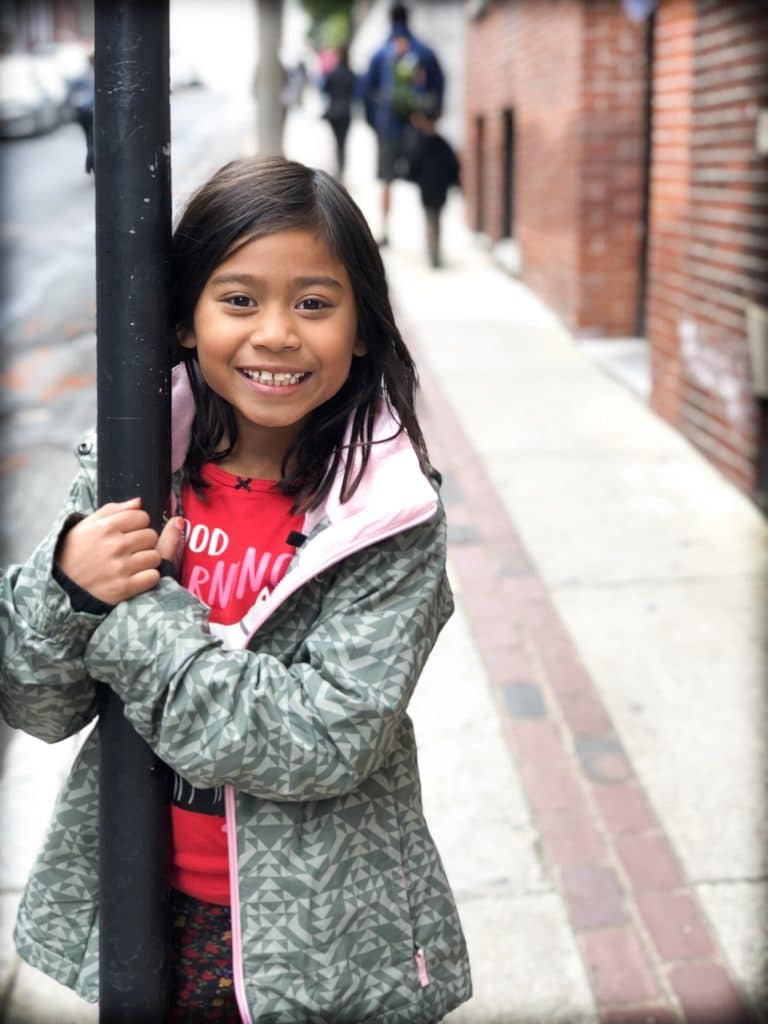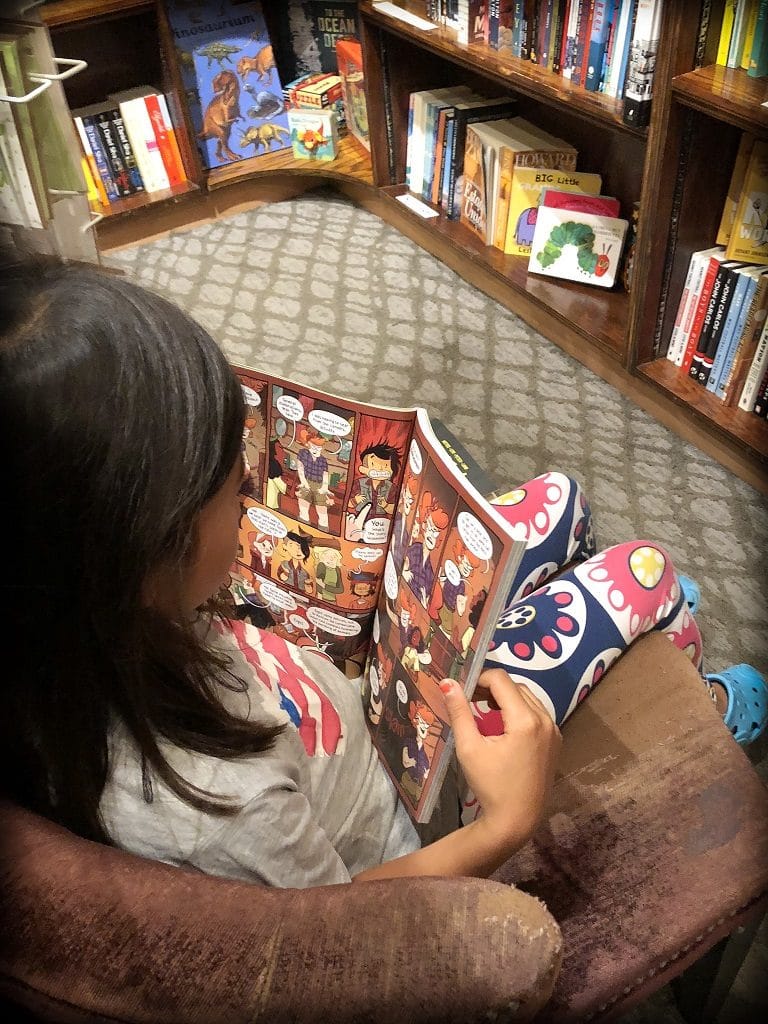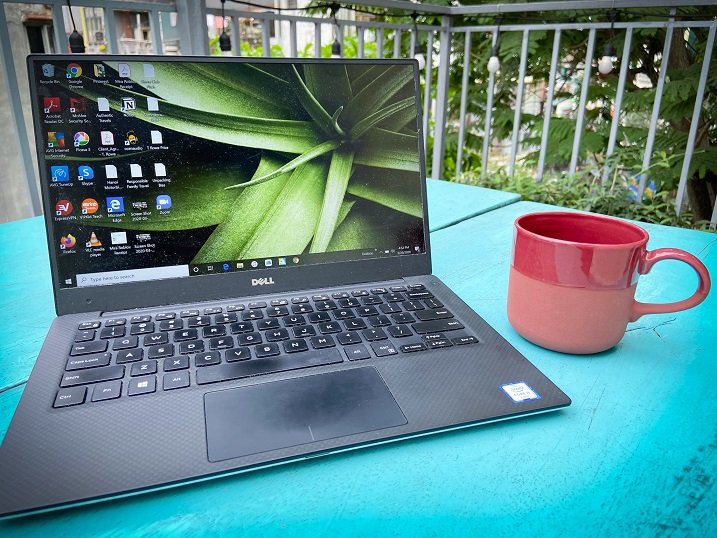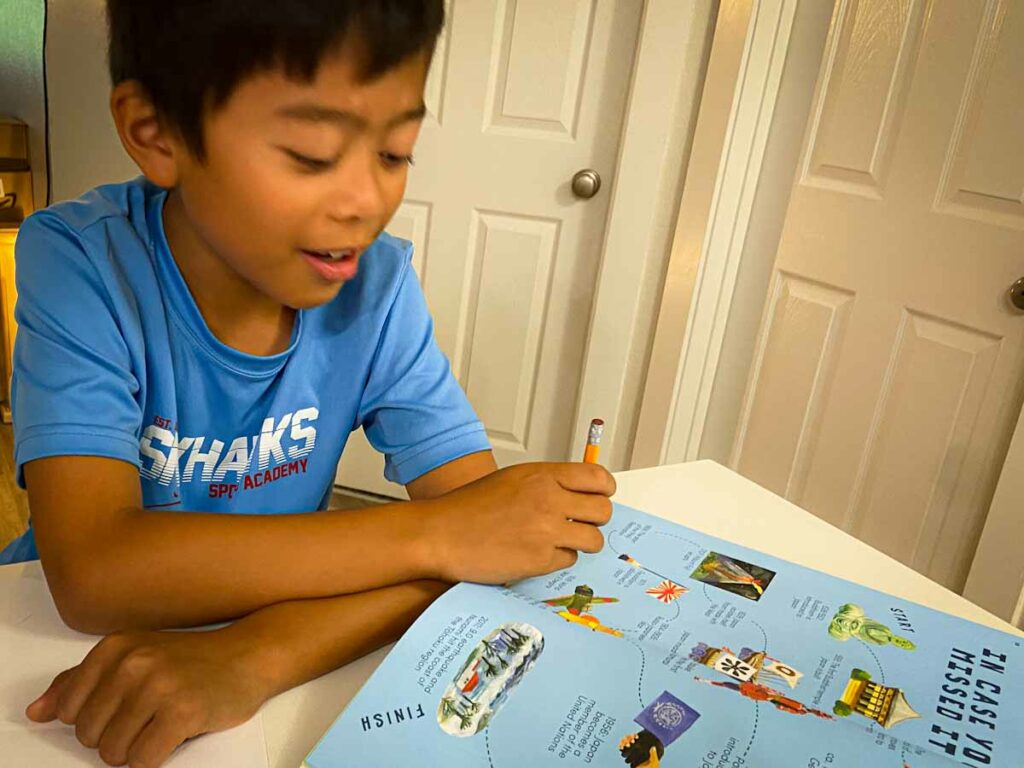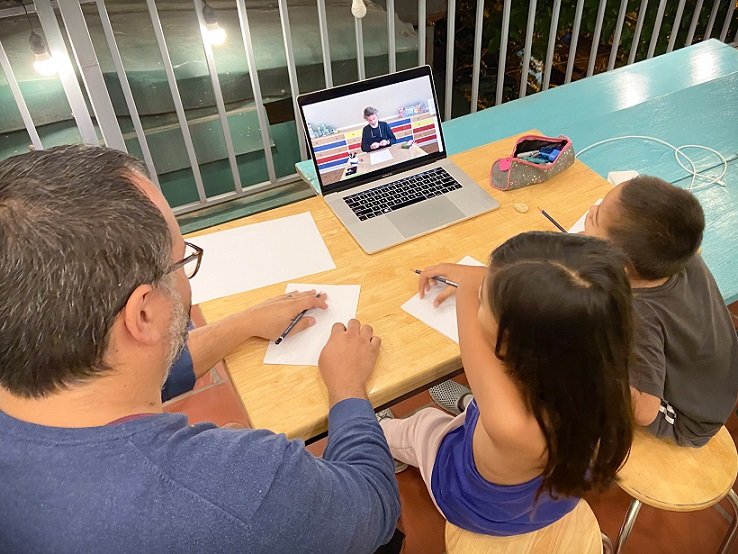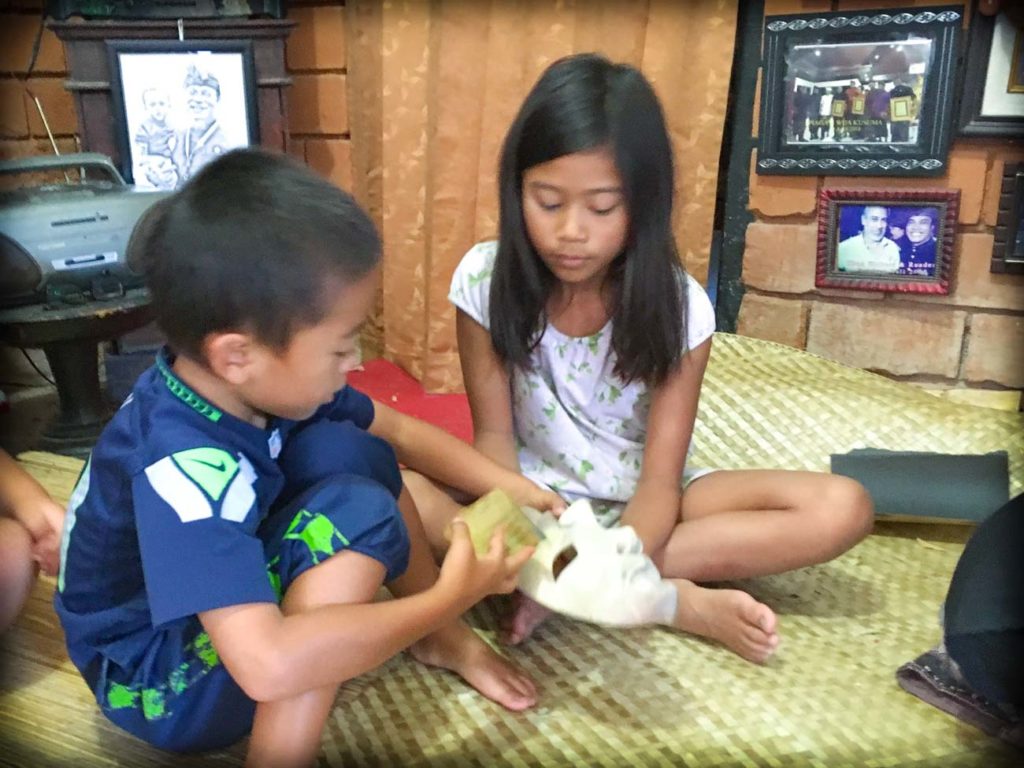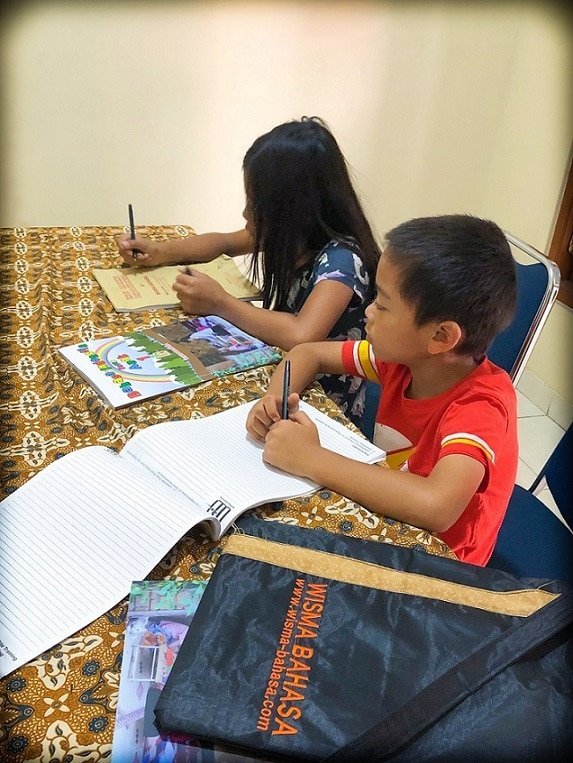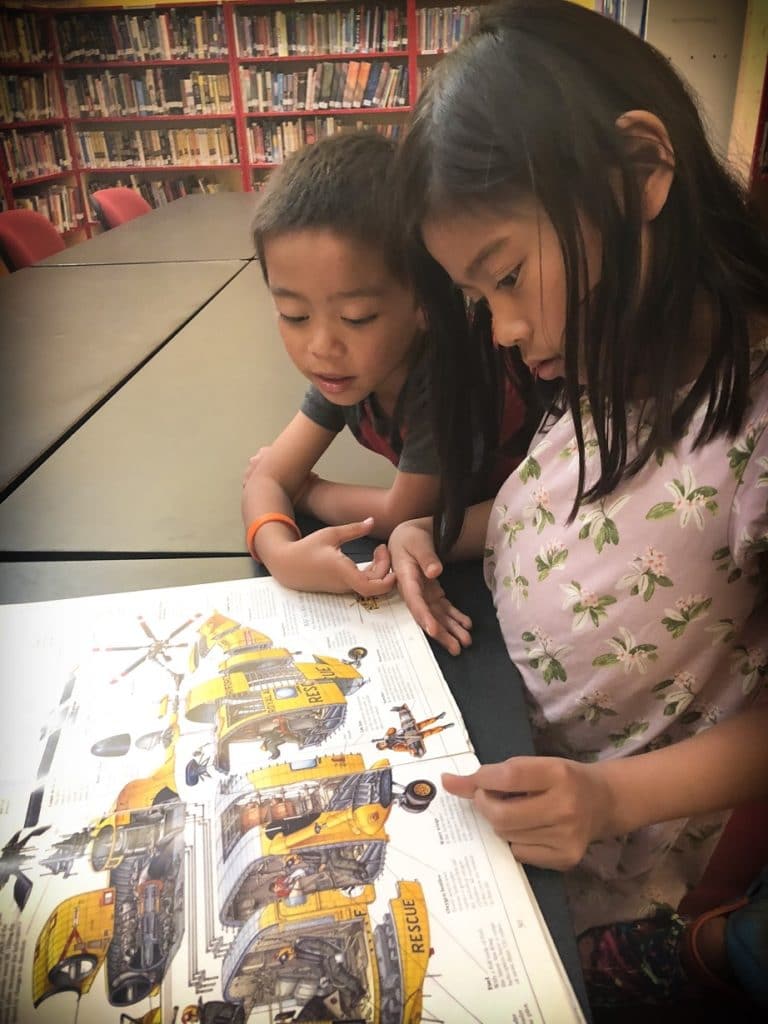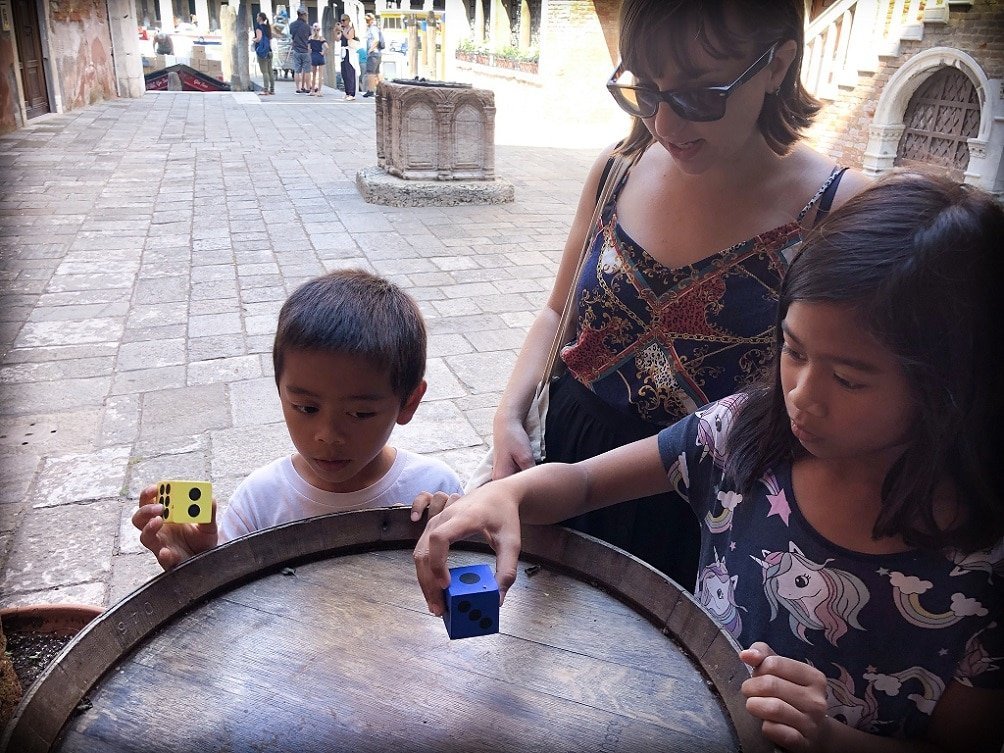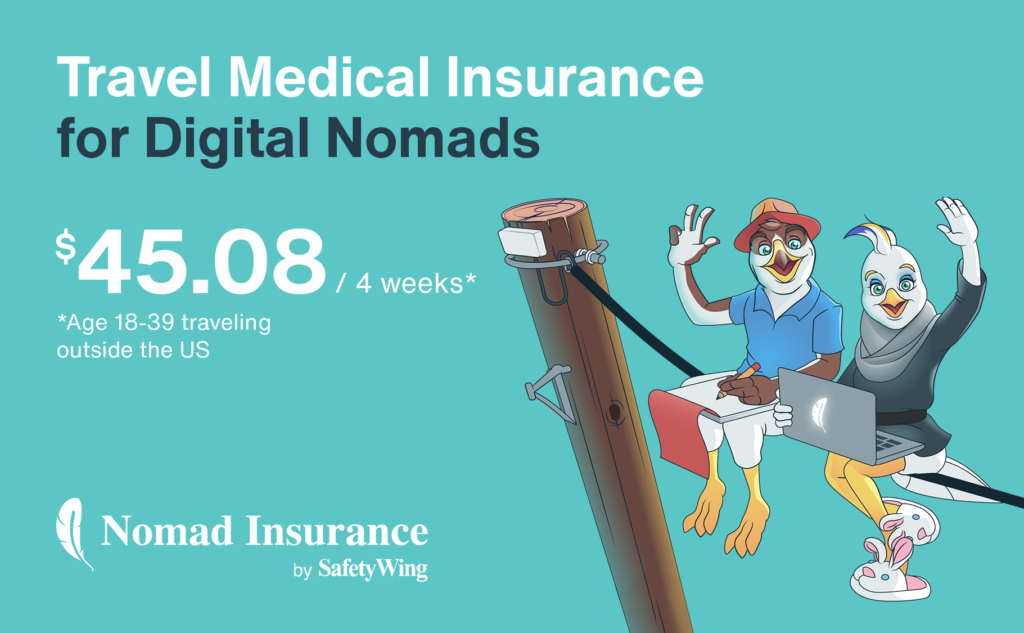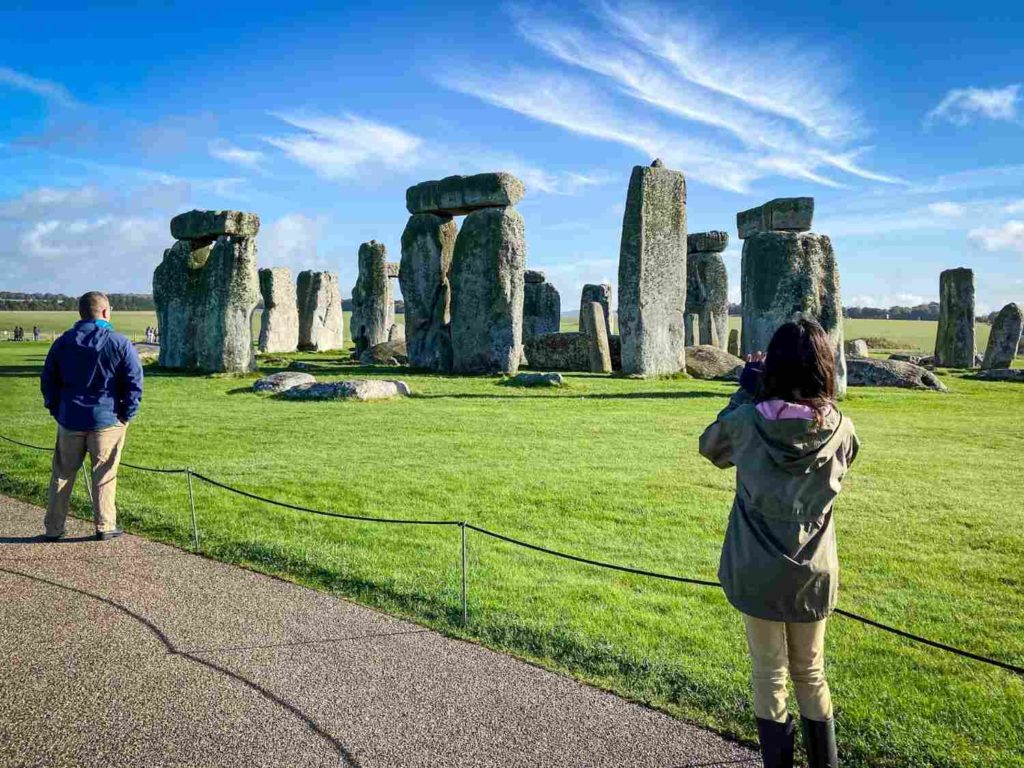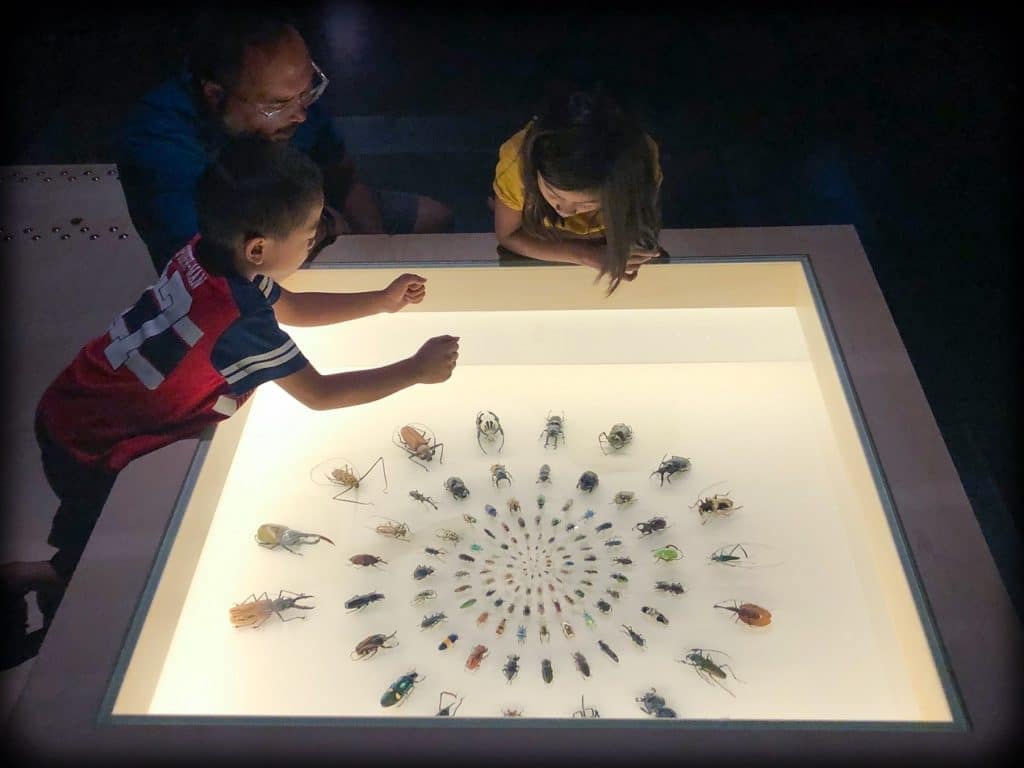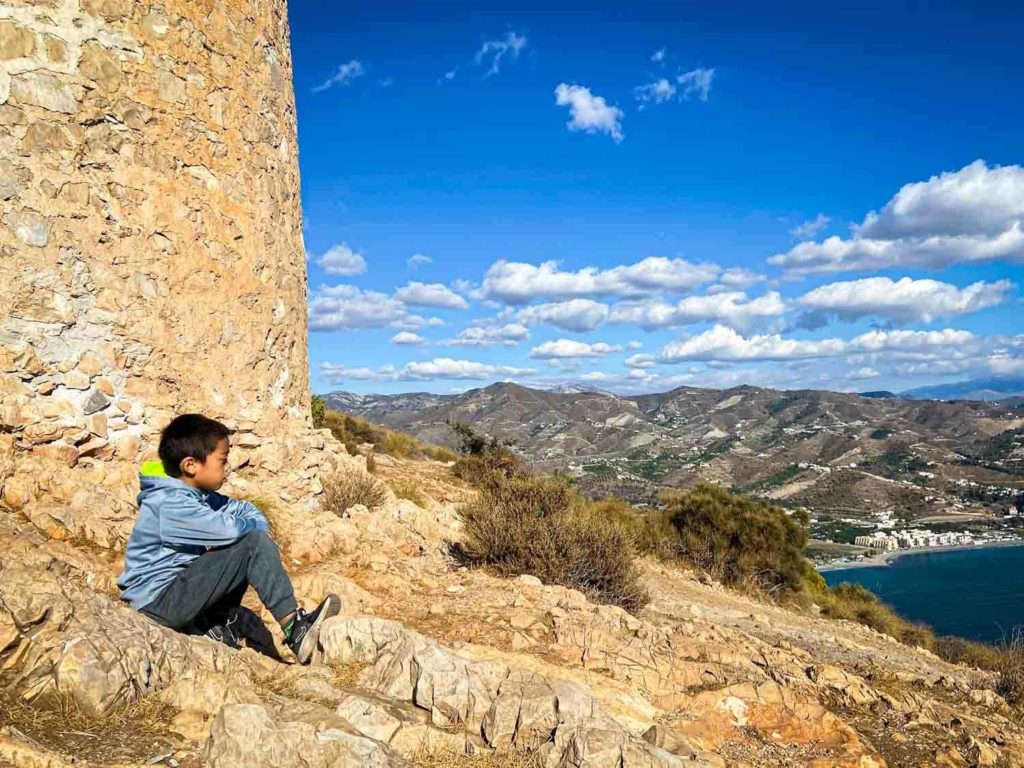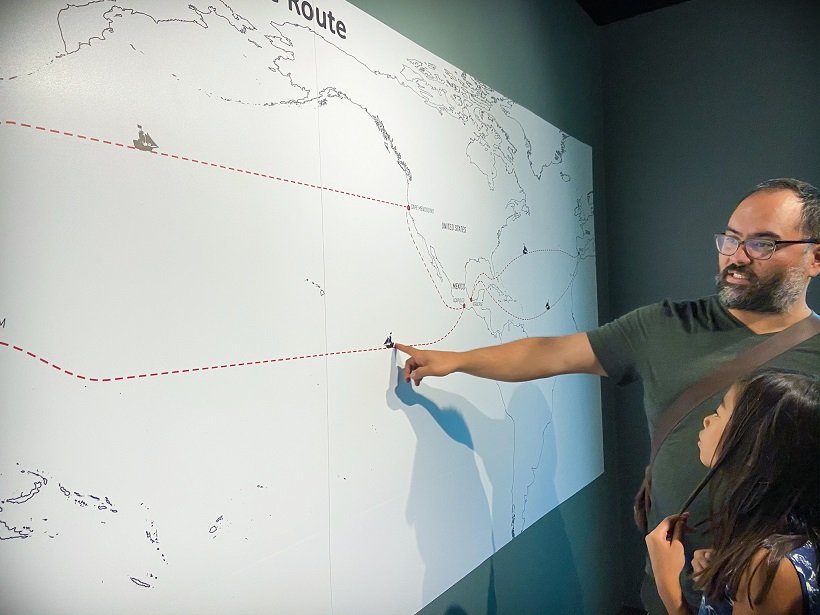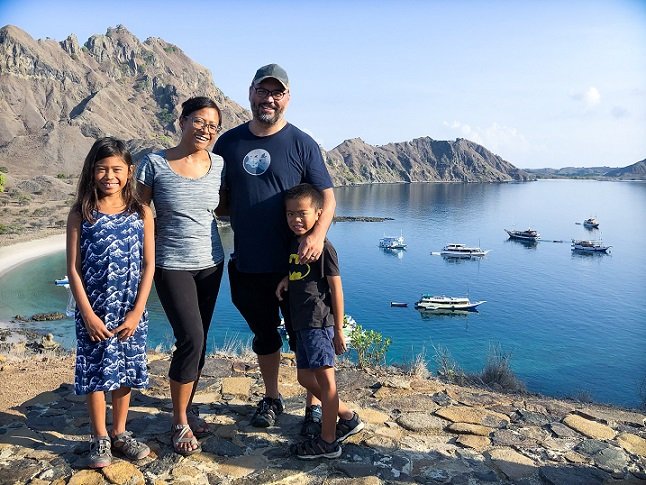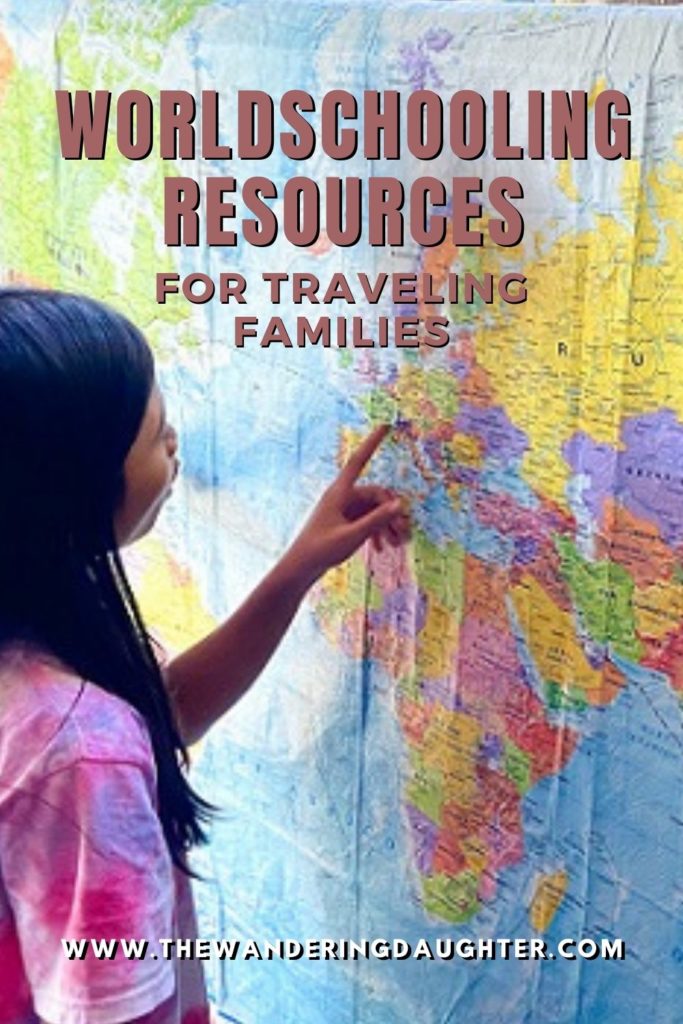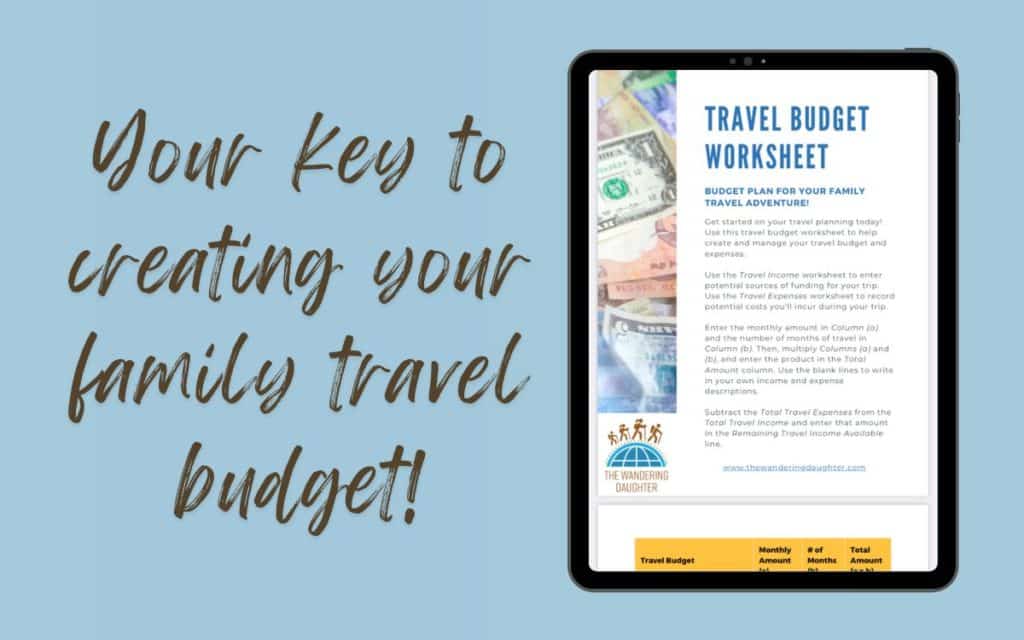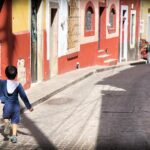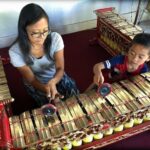45 Valuable Worldschooling Resources for Families
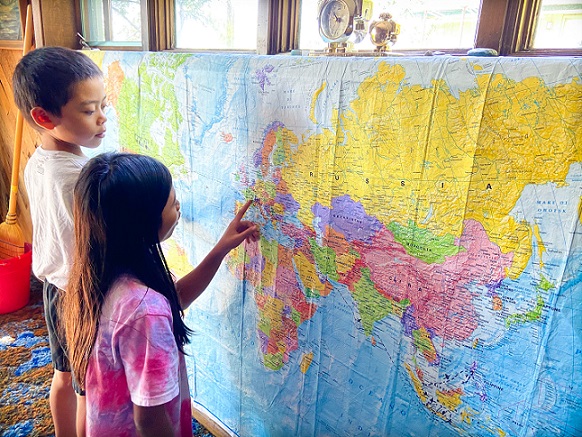
The term worldschooling is all the buzz these days. With the ease of travel, remote work, and home education, the prospect of worldschooling, and all its associated worldschooling resources, is now a viable option for many families.
In some ways, the last few years have dramatically shifted our thinking in terms of work and learning. Many businesses have shifted to a remote or hybrid model. And more parents are choosing homeschooling, either through frustration with the educational system or a desire for something different.
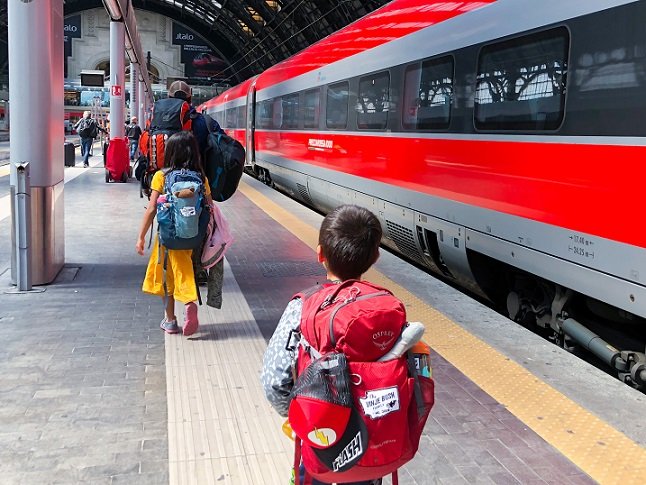
What this means is families now face the opportunity of a lifetime. Not having ties to a physical location for work or school frees families up for traveling. These days, many families are embarking on (or planning for) worldschooling journeys with their kids. And having a solid toolkit of worldschooling resources will be key to making their adventures a success.
This post was originally published on March 24, 2021.
This post may contain affiliate links. That means I may receive a small commission if you click on the link and purchase something. But don't worry, this will not result in any extra costs to you.
My top 5 worldschooling resources
Want to know what my top 5 worldschooling resources are? Take a look at this list:
- Trailblazing Families 12-week worldschooling course
- Outschool online classes for kids
- Lingopie and Duolingo language learning apps
- Khan Academy math curriculum
- Education.com worksheets
Plus, don’t forget about my ebook, Hey Kids, Let’s Go Travel! which is packed with tools and resources for worldschooling.
Creating a worldschooling curriculum for your family
We’ve been worldschooling since 2012, when our family first took our first international trip to Southeast Asia. Since then, we’ve used our travels, including our around the world trip from 2018 to 2022, as worldschooling resources for learning.
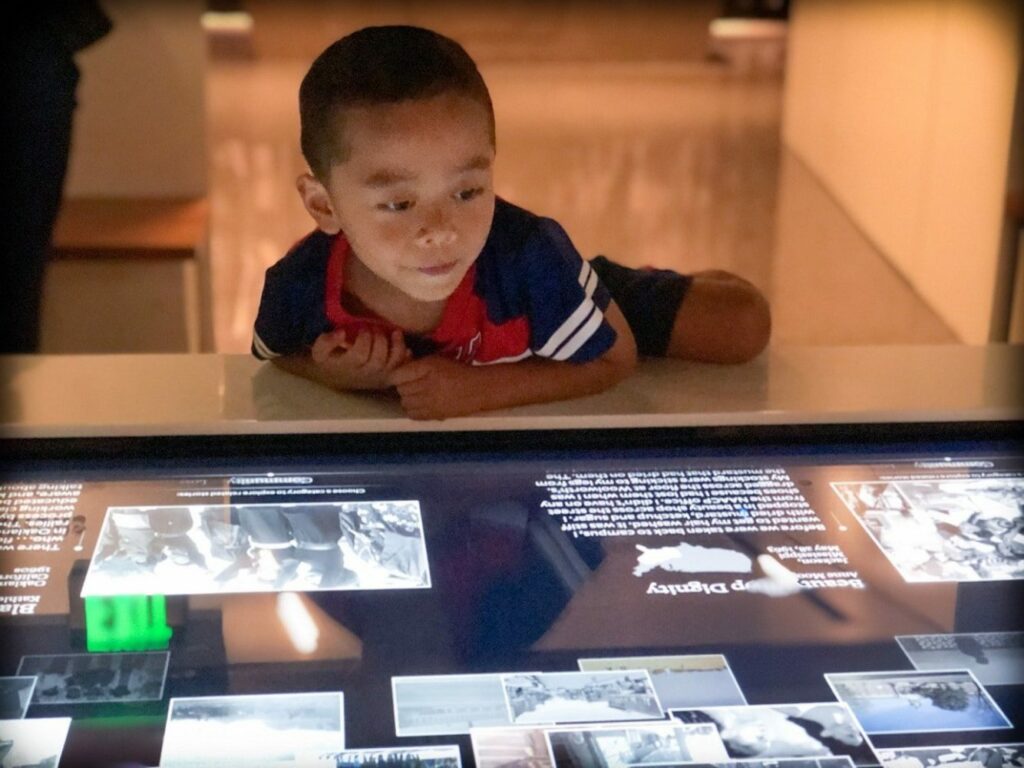
If you’re new to worldschooling, the task of creating a worldschooling curriculum for your family may seem intimidating. There are so many worldschooling resources out there, so where do you even begin?
Luckily, I’ve put together this extensive list of worldschooling resources to help you get started. This list is geared for families who want to become worldschoolers. But it’s not limited to just resources that deal with travel. In actuality, they’re resources that families can use anywhere in the world, so it’s perfect for families who want to be a digital nomad family or location-independent.
The worldschooling resources range from curriculum-based to learning apps, as well as online classes and physical resources. As you’re putting together your worldschooling curriculum, consider what your children’s interests are. And also consider what types of skills you want your kids to develop.
Since every worldschooling family is unique, not every resource may apply to your family. But I’ve tried to list resources that can be used for a wide range of ages and abilities. Additionally, the worldschooling resources I’ve included are all ones that you can travel with. We’ve used many of them ourselves during our travels (and have made note of the ones we haven’t used), so they’re perfect for traveling families.
Parent-focused worldschooling resources to get you started
To get started on worldschooling, you need to know how to do it. There are a lot of parent-focused worldschooling resources that are geared towards helping parents organize and plan their kids’ learning experiences.
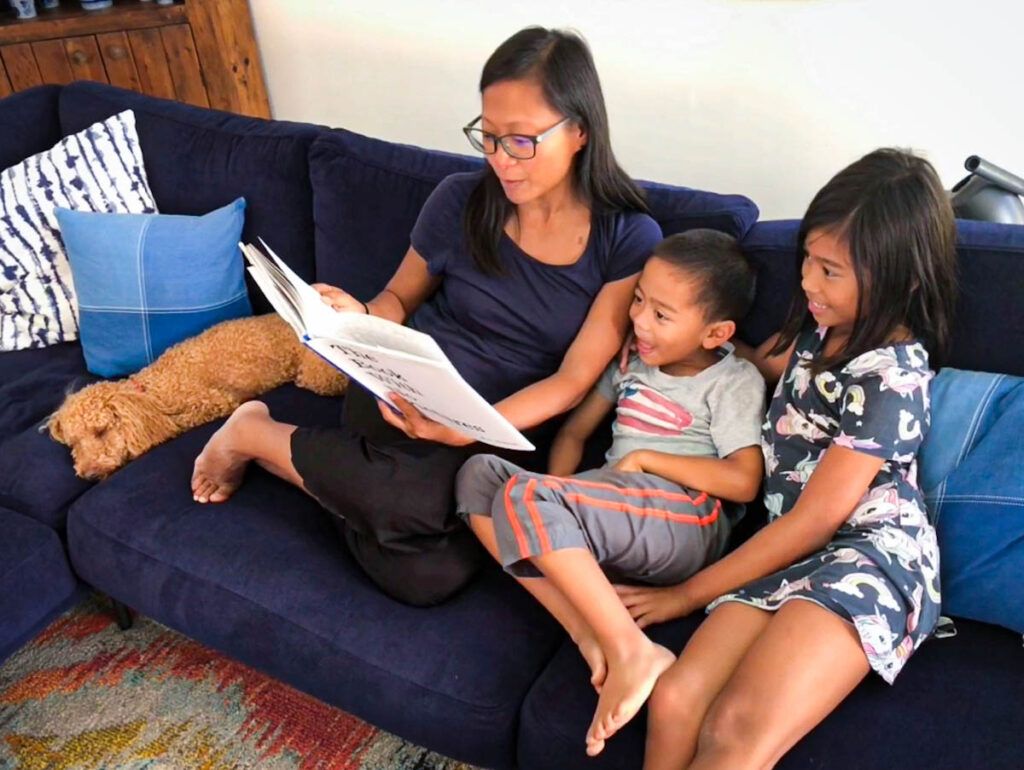
What I’ve learned when I was homeschooling during travel is that it’s a continual process of learning for the parent too! Not only are we learning about what learning styles are best for our kids, but we’re also learning about new resources, new learning philosophies, and new communities that are available for families.
The following list contains resources that are aimed at helping parents in their worldschooling journey. I’ve compiled an eclectic list of online resources, books, and apps to help you as a worldschooling parent.
1. Trailblazing Families worldschooling course
If you want someone to hold your hand as you learn how to worldschool and travel full time, then Trailblazing Families is the right tool for you. It’s a training course led by a woman named Lizz Quain who has been traveling full time with her kids since before 2017. She leads a 12-week course to prepare families for launching their full-time travel journey.
In her course, Lizz covers how to plan for your trip, how to travel as a worldschooling family, and also goes into great detail about how to educate your kids on the road. I first met Lizz in 2017 and have met up with her multiple times throughout the years. She’s really knowledgeable and is a wealth of worldschooling resources for families!
2. Facebook groups for families who worldschool
Having a network of like-minded families can be helpful for finding worldschooling resources. There are several Facebook groups that focus specifically on worldschooling. These groups include Project World School, Worldschooling Central, We Are Worldschoolers, Worldschoolers, and Trailblazing Families.
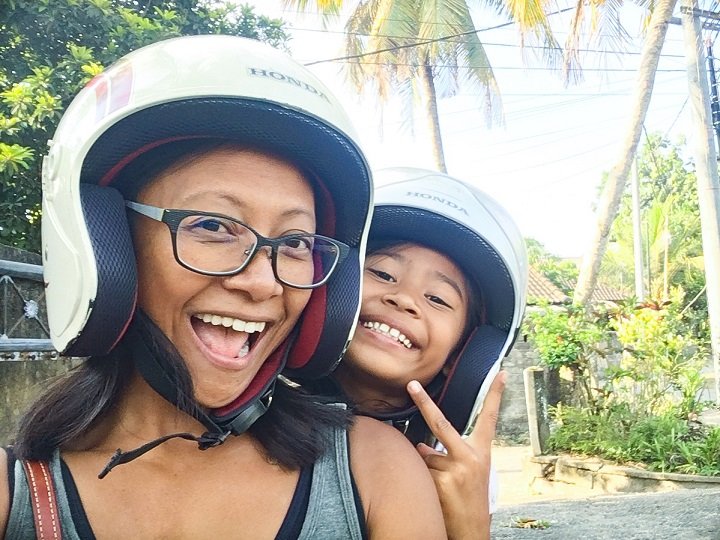
Each Facebook group aims to provide an online space for families to connect with each other. And many have offshoot groups that are more specific: worldschooling gamers, worldschooling entrepreneurs, worldschoolers of color. Take a look and see what group works best for you and your family.
If you’re passionate about traveling responsibly and sustainably, join my growing and active Facebook group, Responsible Family Travel. Each week, we discuss various topics related to traveling the world in an ethical and environmentally friendly way.
3. Local homeschooling organizations
Depending on where your home base is, local homeschooling organizations make great worldschooling resources. My home state of Washington state, for example, has the Washington Homeschool Organization.
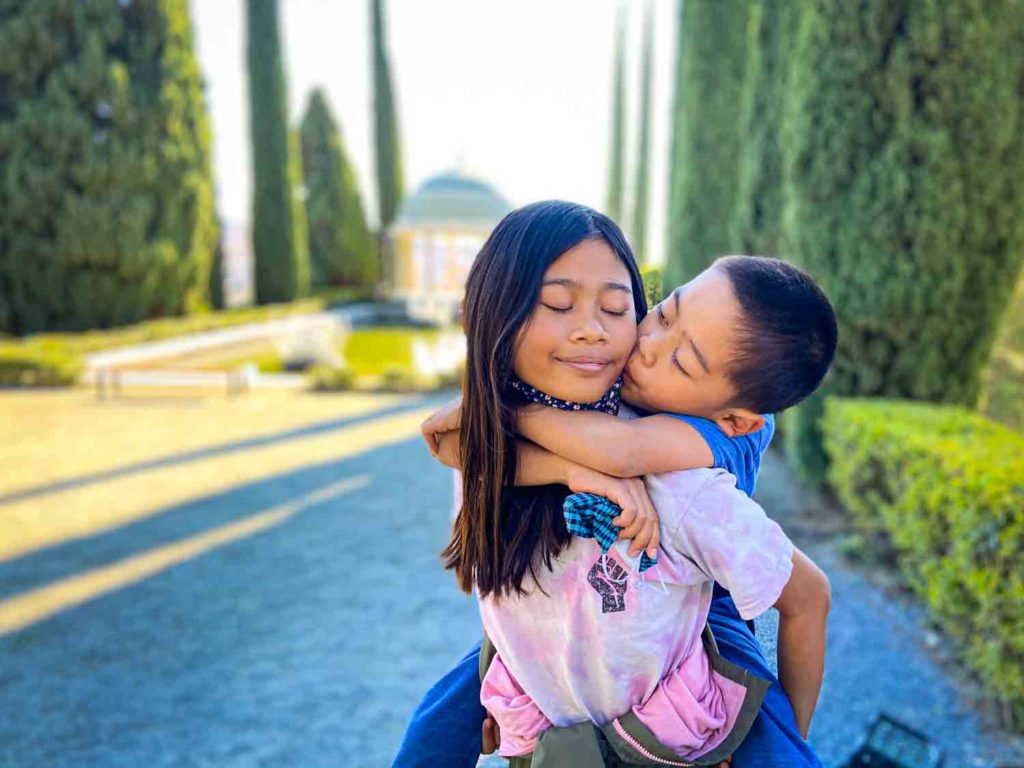
In the United States, Home School Legal Defense Association (HSLDA) offers a list of homeschool organizations by state to help you get started. Although HSLDA is a Christian organization, their list includes secular organizations too.
HSLDA also has an excellent database of homeschool laws by country for many countries in the world. This can help you research whether it’s legal to homeschool in the countries you’re traveling to.
4. Time-keeping apps and record-keeping tools
Keeping track of time spent on learning is not necessarily a requirement for worldschooling. In fact, the very definition of worldschooling involves incorporating learning into a more holistic experience. However, if you do wish to keep a record of hours spent on various learning activities, time tracking apps can be useful worldschooling resources for that purpose.
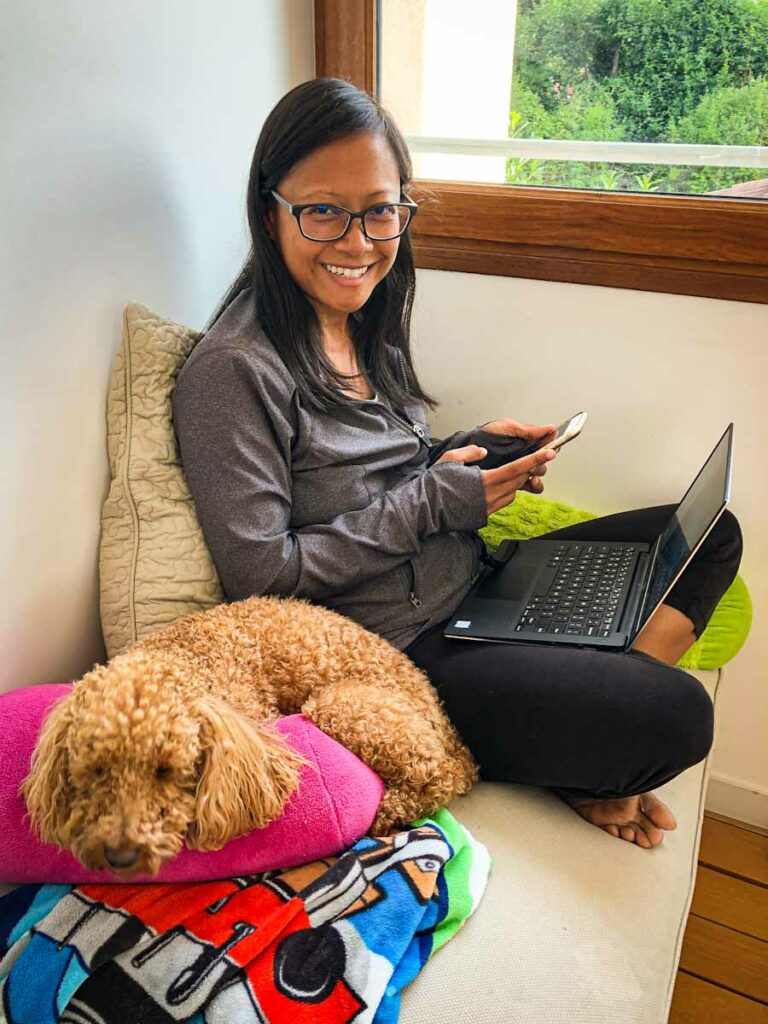
My family uses the Hours app because I can set up timers for each subject that we do (for example: reading, writing, math, science, social studies, history, art). But the free version of the Hours app is limited in terms of reporting functionality. I usually end up manually inputting the hours I track on the Hours app into a worldschooling record I keep for each of my kids.
If you’re interested in record-keeping as you homeschool, but don’t want to go through the hassle of creating your own tool, you can grab a copy of my free worldschooling record template. It helps you track the learning activities you do and the subjects you cover, as well as track a reading log for your kids.
5. Other parent-focused worldschooling resources
Here are a couple other parent-focused worldschooling resources that I recommend. They're great if you're still new to homeschooling and want a little more structure.
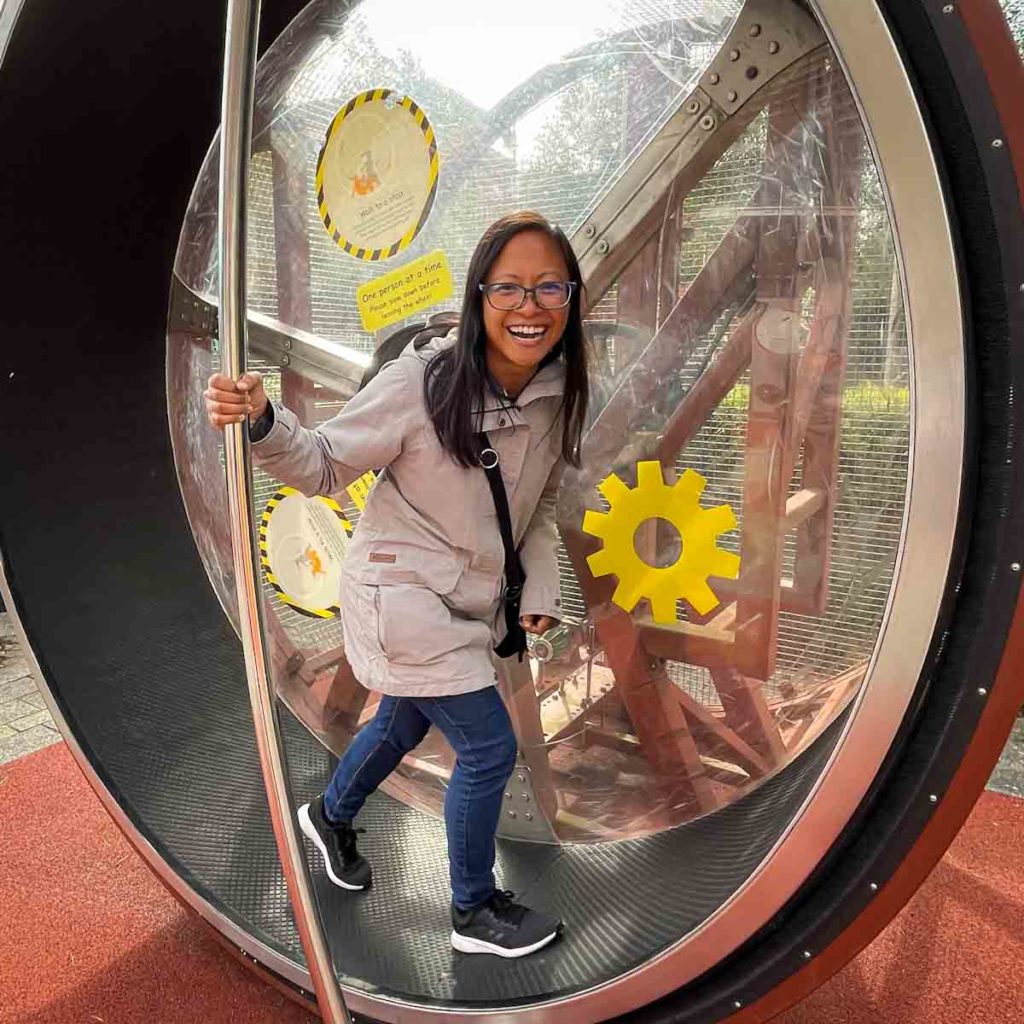
The Case For Homeschooling is a book by Anna Dusseau that offers resources for how to start homeschooling. Dusseau also shares stories of how families homeschool their children, including my family as the example for worldschooling. This book is really helpful for families to see how different the various approaches to homeschooling can be.
Some states in the United States may have assessment requirements for families who homeschool. We like using Family Learning Organization (FLO), which offers standardized assessments that parents can proctor at home. You’ll need to check with your state’s homeschooling law to see what’s required.
If you’re not comfortable with standardized tests, but still want some kind of assessment for your child, you can also choose to send a portfolio of your child’s work to have one of FLO’s certified teachers evaluate the portfolio. This is the approach we usually take when we homeschool.
Explore more worldschooling resources here.
Curriculum-based worldschooling resources
This next set of worldschooling resources covers curriculum-based resources that you and your family can use while worldschooling. If you’re a family that travels often, or even if you’re stationary and want an academic supplement, these resources are excellent for covering the educational fundamentals: math, reading, writing, and history.
6. Khan Academy
Khan Academy is a free educational resource that offers courses that learners can take at their own pace. Subjects range from math to the humanities.
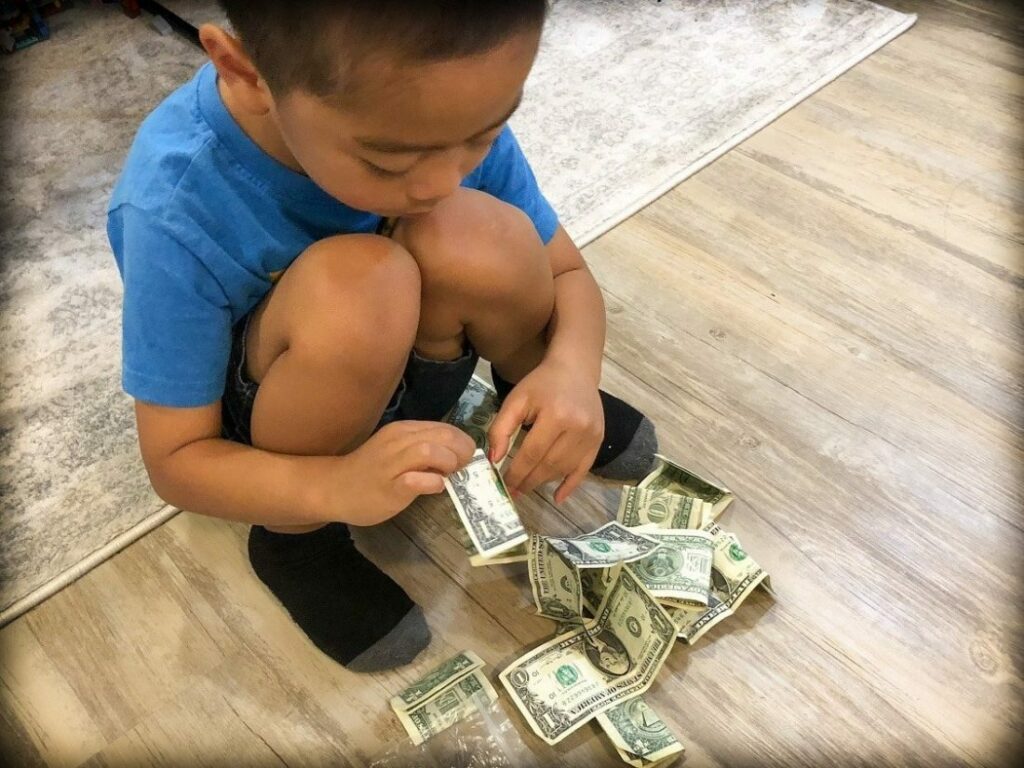
Younger learners can take the math-courses, which are organized by grade level. For older learners, Khan Academy also offers more advanced subjects like world history, economics, and biology. It also offers test prep for the SATs.
We like using Khan Academy for our math curriculum because it allows us to track our kids’ progress. The one drawback of Khan Academy’s math curriculum is that the pace often goes too fast. We will usually supplement their math learning with extra examples and math practice from other worldschooling resources.
7. Khan Academy Kids
For kids who are too young to take advantage of the worldschooling resources available through Khan Academy, they can utilize Khan Academy Kids. This resource is geared towards early learners (generally under 5), and has games, stories, and videos that kids can interact with.
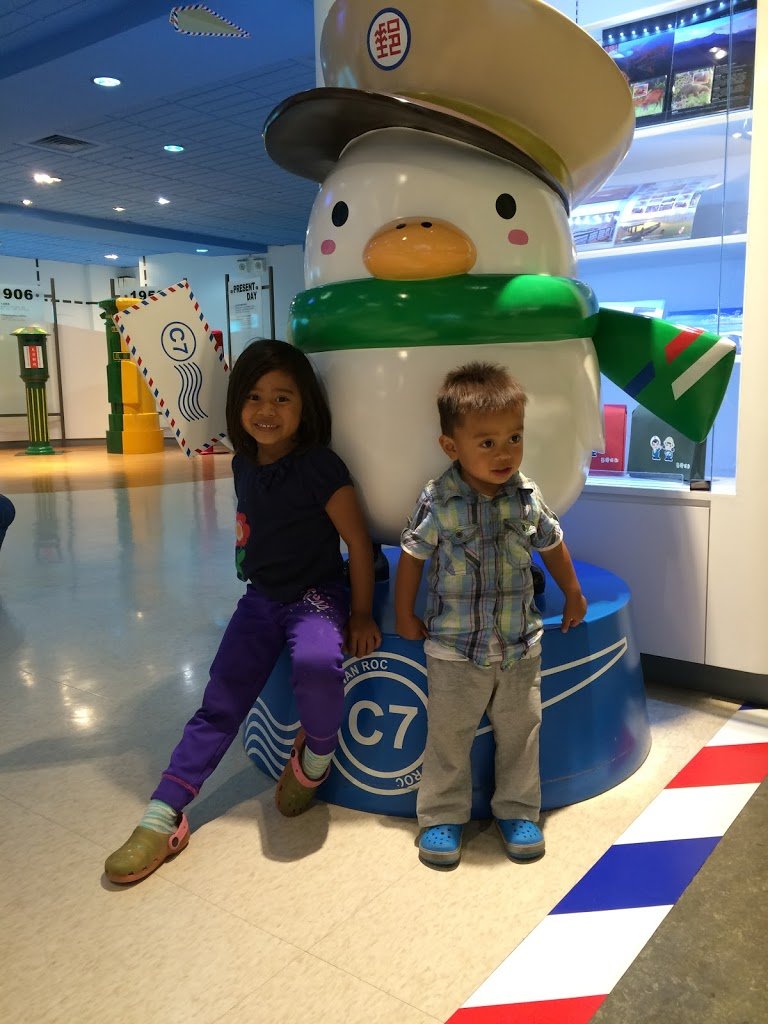
Subjects covered through Khan Academy Kids are mainly reading and math. But kids can also learn about science and emotions through the stories and games. Khan Academy Kids is free to use.
One of the things we liked about Khan Academy Kids is that it introduces learners to reading and math concepts in a fun way. When reading the stories, the kids can either have the stories read aloud to them through the app, or they can read on their own. The reading and math lessons are presented as games, and learners can go at their own pace.
8. Education.com
Education.com offers a library of worksheets, games, lesson plans, and workbooks for learners and their families. Subjects covered include math, language arts, and science. Learners can also learn typing through a game-based course.
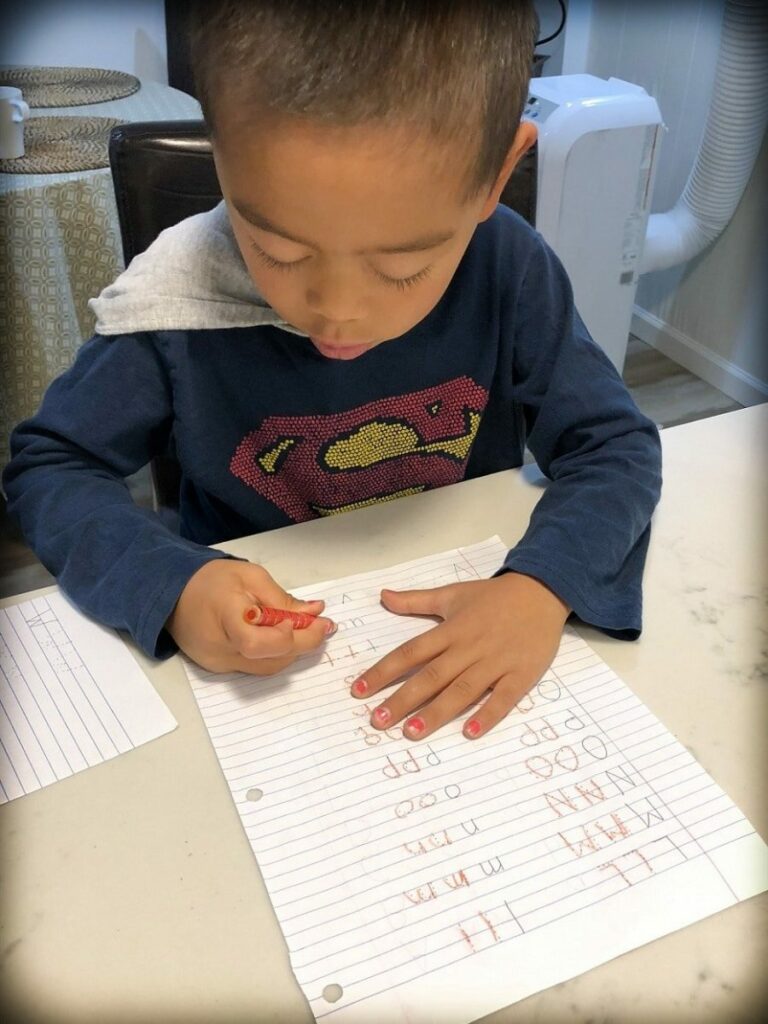
Access to Education.com’s resources costs $15.99 per month, or $120 per year. We use Education.com for the language arts portion of our kids’ learning. The website organizes the worksheets, lessons, and games based on Common Core Standards, so parents can really focus on the skills they want their kids to develop.
9. Zinn Education Project
Much of the history we were taught as children was often biased towards a white-centric perspective. Zinn Education Project takes a people’s history approach instead, and focuses the stories on indigenous, immigrant, and minority communities.
The worldschooling resources offered by Zinn Education Project are organized by time period, by theme, and by resource type. Access to Zinn Education Project is free. However, you are welcome to provide a donation.
We like the decolonized approach to history that Zinn Education Project offers. We used some of their resources during the summer of 2020 to discuss critically as a family the importance of the Black Lives Matter movement.
10. Educational gift subscriptions
Having a geography-based world cultures curriculum on hand is a no-brainer for families who love travel. And one way that you can get that is by signing up to an educational gift subscription. Here are a few of our favorite subscriptions that make perfect worldschooling resources for families.
Honest History
Honest History is magazine subscription that focuses on history. Each issue deep dives into the history of a place during a specific point in time, like Japanese samurai, West African golden age, the Ottoman Empire. Get 10% off with my code, WANDERDAUGHTER.
Little Passports
Little Passports is monthly subscription box filled with interactive activities and books focused on a country. Kids get to learn about the culture and geography of the country, and receive a souvenir!
Bitsbox
Bitsbox is a monthly subscription box is not specifically geography-focused, but we love it box because it teaches kids how to code apps! Each subscription contains fun themed activities that teach kids how to build a simple app. There's an online version too, so kids can learn app-development skills while they're traveling.
11. Other curriculum-based worldschooling resources
The selection of curriculum-based worldschooling resources for families to use is vast. Other options that we have not yet used, but are recommended by families we know include the following.
BrainPop
BrainPop is an animated educational site that covers science, social studies, arts, math, and english. These worldschooling resources are aimed for kids of all ages. Subscriptions range from $9.95-$19.95 per month or $79-$159 per year.
Saxon Math
Saxon Math is a math curriculum that offers educational resources in the form of workbooks, assessment books, and digital resources. Created by HMH, an education company, Saxon Math is best for students who like following a rigorous curriculum. Prices for their resources vary depending on the type of resource.
Woke Homeschooling
Woke Homeschooling offers a U.S. history curriculum that is “inclusive, relevant, and engaging.” The focus of the curriculum is on African Americans, Native Americans, and immigrant stories. The downloadable 38-week curriculum, titled “Oh Freedom!”, costs $39.99 and targets 3rd to 7th graders. There is also a high school edition that costs $59.99.
Waldorfish
Waldorfish offers an art, math, and science curriculum that is based on the Waldorf educational approach. Courses are self-paced and video-based. Students and their parents also have access to an online classroom where they can pose questions and get feedback. The price of the courses range from $29 to over $150.
Kamali Academy
Kamali Academy offers an online curriculum and online courses specifically focused on an African-centered education. Access to their online curriculum is $197 per year. Kamali Academy offers workbooks on math, writing, spelling, and social studies. They also offer online courses.
Book-based worldschooling resources
One of the most fundamental skills for worldschooling is reading. When children know how to read, it opens up a world (no pun intended) of learning for them!
This next set of worldschooling resources covers book sets aimed at encouraging reading and learning. Most of the resources in this list are targeted towards elementary school aged kids or younger.
12. Magic Tree House
Learning about history can get boring, but the Magic Tree House book series makes history entertaining. The series revolves around two siblings, Jack and Annie, who find themselves in time-traveling adventures as they aim to solve mysteries.
Readers get a glimpse of what life was like in the past. Stories in the series take place in ancient times like Ancient Greece and Ancient Egypt. Other stories take place in historical moments in American history. Each story is fun to read on its own, but you can also read the whole series as a whole to get a better picture of the overall story arc.
The Magic Tree House books are great for families who travel because they can give a nice historical context to the places you visit. While walking the Freedom Trail with kids in Boston, we read Revolutionary War on Wednesday. And when visiting California, we read Earthquake in the Early Morning to learn about the 1906 San Francisco earthquake.
You can get the first twelve books of the Magic Tree House series on Kindle or in paperback form. And there are also supplementary books that make perfect worldschooling resources to dive deeper into the subject matter covered in specific books.
13. Science Comics
For kids that enjoy comic books and graphic novels, the Science Comics series is a good way to dive deep into scientific topics in an entertaining way. The series covers topics like dinosaurs, the solar system, trees, cities, weather, and even the brain.
The illustrations are fun and cute. But what we really like is that the facts are presented in an engaging story. So kids are learning about science, but not in a dry textbook sort of way. The fact that the whole series is available as ebooks makes them easy worldschooling resources to use for your science curriculum.
We’ve used the Science Comics books occasionally during our travels. While experiencing snorkeling in Bali and Lombok, we read Coral Reefs: Cities of the Ocean. And when the pandemic started, we read Plagues: The Microscopic Battlefield as a way to understand how pandemics happen and how vaccine research works.
14. Bob Books
Teaching kids to read can be challenging. But the method that the Bob Books use to teach reading makes the process seamless and easy. Bob Books are sets of short story books that focus on teaching reading to early learners. Each story focuses on only a small set of sounds and words, so that learners can practice reading the words through repetition.
There are five sets of Bob Books, with each set focusing on specific skill levels. These books are available on Amazon as e-books, which makes it convenient for traveling families.
Our son went through the whole series in about 10 months when he was six. And by the end of it, he was confident enough to start reading comic books and graphic novels.
Physical worldschooling resources to use while you travel
Not all of our worldschooling resources are online or electronics-based. We do use some physical objects as part of our learning tools for our kids.
When you’re a traveling homeschooling family, space in your suitcase is often limited. So when we do choose to use physical learning resources, we’re often quite intentional about what we choose. The physical resources listed below are lightweight and fairly small, so they won’t take up a lot of room in your suitcase.
15. World map tapestry
Traveling with a world map tapestry makes it easy for families to keep track of where they have been. It’s also an excellent way to incorporate geography lessons into your travel days. Kids can visualize where they’ve been and where they are now in the world by looking at the map!
When looking for a world map tapestry, pay attention to the fabric being used, and whether it is washable. Also, take a look at how much the map weighs. Our world map weighs less than half a pound, which makes it easy to carry around when we travel.
16. Dry erase pockets and markers
It’s amazing how much paper kids can go through during the span of a week! And if you’re a traveling family, there’s really no space in your bag to carry around reams of paper to satisfy your kids’ drawing needs.
That’s why we like traveling with dry erase pockets and dry erase markers. These worldschooling resources are so useful for practicing writing, for creating calendars, and even for making chore lists. In order to post things on the walls of the places we stay, we carry along sticky tack. It’s like our own portable classroom!
17. Rocketbook
For writing out math problems, my husband likes having the kids use Rocketbooks. They’re reusable notebooks that let you erase and rewrite pages with a special pen and microfiber cloth eraser.
Like a regular notebook, you write on Rocketbook pages with their Pilot Frixon pen. When you’re ready to erase, you get the microfiber cloth wet and wipe away the pen. One great feature is that Rocketbook has an app that allows you to take a picture of the page and connect it to an online document like Google Docs, Evernote, or OneNote.
Rocketbooks come in various sizes. Our kids use the smaller books, while my husband uses the larger planner book.
18. Board and card games as worldschooling resources
Most families write off board games and card games as purely entertainment. But games can be educational too. Many travel card games can help kids build skills like math, problem solving, strategy, and cooperation.
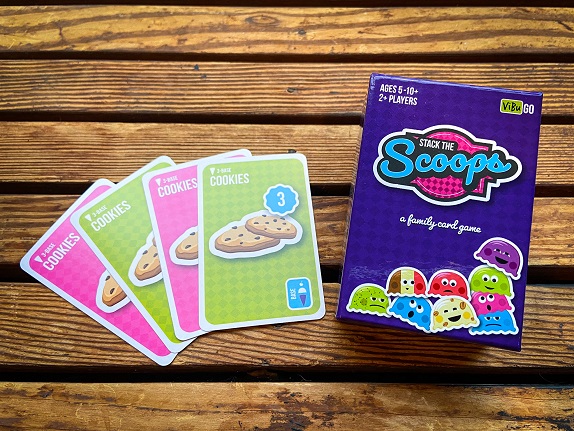
Some of our favorite card games to travel with are Sushi Go and Mille Bornes, which help reinforce math skills. We also like Unstable Unicorns, which reinforces strategy and reading skills (those cards have a lot of words that you need to read quickly!).
And of course, our favorite card game to bring along when we travel is Stack The Scoops, which we ourselves created and sell on Amazon. It’s an award-winning ice-cream themed matching card game that helps reinforce addition and simple multiplication skills.
When picking out card games to include in your worldschooling resources list, think about what games will be enjoyable for the whole family to play. Also choose games that will grow with your family. This means you’ll still be able to play them as your kids get older.
Stock up on our favorite card games by clicking on the following buttons.
Class-based and community-based worldschooling resources
For families who travel often, signing up your kids for regularly scheduled extracurricular and enrichment activities can be challenging. Similarly, families living outside their home country may have a hard time finding local enrichment classes for their kids.
Fortunately, with the spread of online learning, finding online enrichment classes is much easier for families. This next set of worldschooling resources covers online classes and online instruction that worldschooling families can use for learning.
19. Outschool
For traveling families, not being in the same location for an extended period of time doesn’t allow kids to take part in regular classes, clubs, or activities. And even if you’re location-based, sometimes the types of classes your kids want to take are not available in your location. But with Outschool, kids have access to virtual classes, clubs, and activities.
Outschool offers online learning experiences for kids. Subjects range from arts to science, health and wellness to history. Costs for Outschool classes vary, but are generally between $12-$15 per class. Some Outschool instructors offer one time classes, while others offer a series of them.
Our kids started taking Outschool classes in November 2020 as a way to break up the monotony of quarantine. They’ve done ballet classes, karate classes, and even coding classes.
What we like best about Outschool is the flexibility that it offers, and the variety of opportunities to learn new things, no matter where we are in the world. One of the drawbacks, though, is that the quality of instructors varies, so it’s important to read the reviews of the instructors.
If you’re interested in trying out Outschool, use my referral code to get $20 off your first class purchase.
20. Online schools as worldschooling resources
Online college classes can be a good resource for high school age students. Junior colleges and community colleges will sometimes allow high school students to register for their classes. For worldschooling families who intend to have their kids attend college, this is a great way to have them complete some of their general education requirements.
Additionally, families can also utilize free resources offered by universities. Galludet University, for example, offers free American Sign Language (ASL) lessons online. Harvard University also offers free online courses in over 10 subjects in the arts and sciences.
If you’re interested in enrolling your kids in an online school, consider Brightspire, an online middle school and high school. Brightspire is accredited through an organization called Cognia and offers standard middle school and high school classes, along with several electives. This is a good option if you’re traveling full-time and want a more formal school option for your kids. Full year tuition is $4,280, and per semester tuition is $2,349.
21. Tutoring resources with online options
A friend of mine who is a homeschooling mother of six once gave me the best homeschooling advice: you don’t have to do it all yourself. Teaching your children doesn’t have to be your sole responsibility. You can enlist the help of others to teach your kids the skills they need to develop.
If you’re not sure whether you want to tackle the academic parts of homeschooling, like math, reading, or writing, you can outsource it to some of the resources listed here. While we haven’t used these specific resources, families we know and trust have used them and highly recommend them.
Kumon offers individualized instruction for students in math and reading. Though traditionally an in-person center, Kumon now offers virtual classes, which is perfect for traveling families. Costs for the classes depend on the individual Kumon center that your family signs up with.
Time4Writing offers online writing classes for elementary-aged kids. The classes are designed to help students build writing skills, from elementary school and into high school. Each course is eight weeks long, with students logging in at their own time three to four times a week. The cost of each course is $119.
Using travel-based experiences as worldschooling resources
I could go on forever about the many educational benefits of travel. As a traveling family, we know that there are so many learning opportunities we can glean from our travel experiences. And sometimes, we like to share those travel experiences with others too!
The following list are travel-based worldschooling experiences that families can take part in. Unlike the standard travel tour or retreat, these experiences are created with education and learning in mind. They are truly the embodiment of the worldschooling philosophy.
22. Global Family Travels
Most travel tours focus on hitting as many tourist sites as possible. But for Global Family Travels, a family travel company based out of Washington state, the focus of their trips is on learning about the destinations, immersing in the culture, and finding ways to serve the communities they visit.
Global Family Travels offers multi-day family tours in countries such as Indonesia, India, Ecuador, and South Africa. They often partner with local organizations doing work in the communities where the tours take place and give families a chance to take part in a social impact project. The company is dedicated to ethical family travel.
I took part in a Bali tour with Global Family Travels a few years ago, and really enjoyed all the Ubud activities we experienced. During our tour, we rode bicycles through Bali, met a Balinese prince, learned about the water temples, made masks, and even went to a coral reef themed escape room! Because of the nature and pace of the tour activities, these tours are more suitable for families with kids who are at least eight years old.
23. Anahata Worldschooling Community
Families seeking community while they travel can visit Anahata Worldschooling Community, an intentional community based in Mexico. The program is usually based in Ek Balam, in Yucatán state. But due to the pandemic, they are temporarily operating at a secluded site outside of Cancun.
Anahata offers three month programs, where families can stay for at least a month, and take part in communal living and connecting with other traveling families. Food (all vegetarian menu) and lodging are included in the price of the program, as are some excursions and activities. Currently, programs cost $2,300-$2,900 per month, depending on the size of the family.
We participated in one of the Anahata programs during our travels, and our family loved it. We enjoyed the cooperative community vibe, and the opportunities to experience Mexican culture with a group of other families. Most important, taking part in Anahata was a chance for our family to connect with other like-minded families.
When you’re a full-time traveling family like us, you’ll sometimes go months at a time without really connecting with other families. So every once in a while, it’s nice to get a big dose of community all at once!
24. Worldschool Pop Up Hub Community
Worldschooling Pop Up Hub Community is a set of events created by Rachel Hissong Carlson (she’s a member of my Responsible Family Travel group!) and her family. They’re weeklong events around the world where families can gather and do activities together.
For traveling families who are looking for short term meet-ups with other families, Worldschooling Pop Up Hub Communities are a great fit. The world schooling cost for each pop-up hub $140 per family, and basically cover the cost of activities and support the host for that event. Accommodations and food are not included, but families generally find places to stay near where other families are staying.
Past pop-ups have happened in Spain, Japan, Texas, Ohio, Cambodia, Hawaii. Upcoming pop-up events include Fiji, Indonesia, and Italy. We haven’t participated in these pop-up hubs yet, but we know families who have either participated in one of the hubs or hosted it themselves, and have heard great things about these events.
25. Deliberate Detours Worldschooling Hubs
Another worldschooling community opportunity is Deliberate Detours Worldschooling Hubs. These are month-long temporary learning communities organized by local hosts, where families can come together to experience the culture through organized activities, field trips, and classes. Current locations for the worldschooling hubs are Oaxaca (Mexico), Cusco (Peru), and Antigua (Guatemala).
Deliberate Detours was founded by Stephanie Tolk (another member of my Responsible Family Travel group!). Her team consists of education experts, local experts, and worldschooling parents, and each world schooling program is focused on giving families a culturally immersive learning experience. Each location’s world schooling itinerary is specific to that destination.
We haven’t participated in one of the hubs yet, but I love their commitment to cultural immersion. That’s totally right up our alley! These hubs would be perfect for families who want to deep dive into a location.
26. Other travel-based worldschooling resources
I’m always learning about new worldschooling communities that are popping up, or tours that are being organized for worldschooling families. I recently learned about The Hive School in the Dominican Republic and Nica World School in Nicaragua, which both operate on an intentional community model.
Additionally, there are some travel-based worldschooling experiences, like Bridge The Gap Vorovoro and Mom and Kid Travels, that organize group trips for families to visit unique destinations in the world.
Whatever your country interests are, take a look and see if there is a worldschooling program or a worldschooling community in that area. You’ll be able to meet other traveling families and gain some meaningful learning experiences as well.
Finding local worldschooling resources
Another great resource to tap into are the local resources in the destinations that you’re visiting. Families exist everywhere in the world. And wherever there are families, there are bound to be groups and organizations serving those families.
The following list are ideas of how you can utilize local resources for your family’s worldschooling experience. Keep these ideas in mind as you’re doing your travel research and planning for your next family trip.
27. Worldschooling resources through local language schools
When traveling, taking part in local language classes can be an excellent way to learn some phrases and connect with the local culture. Many language schools will usually offer one-on-one classes. And if you’re a family who stays for at least a month at a time in a destination, taking one-on-one language classes at least once or twice a week can really make a difference.
During our travels, we’ve taken language classes in La Paz, Mexico at a place called El Nopal Spanish Language Academy. And while we were living in Yogyakarta, Indonesia, our family took private language lessons at a school called Wisma Bahasa, and even participated in some Indonesian Independence Day celebrations while we were there. More recently, we hired a Spanish tutor during our time visiting Spain's Andalucia region.
Having your kids take language lessons while you travel helps them build respect and understanding for the cultures they visit. And it also gets them familiar with the diverse sounds of language. They probably won’t become fluent, but the little kernels of language you’ve sown in them will likely serve them well in the future.
28. Incorporating museums into your worldschooling curriculum
For parents who aren’t sure of what to teach their kids, museums make great worldschooling resources. If you’re traveling to a city, you’ll likely find plenty of museums to occupy your afternoons. Museums offer a lot of information that kids can take in at their own pace. And they also give kids a chance to engage with learning in a more hands on way.
When we were figuring out what to do in Parma, Italy, for instance, we relied a lot on the food museums that were in the villages surrounding the city. And in cities like Washington, DC and New York City, the museums are plentiful enough to make worldschooling quite easy for our kids.
As part of your preparation for visiting a new destination, take a look at what museums are available in the area, and plan learning days around visits to those museums.
29. Taking advantage of worldschooling resources at public libraries
No matter where you are in the world, public libraries are great sources of worldschooling resources and information. They’re also great ways to get connected to the local community and find out about local events.
We visited a wonderful public library in San Miguel de Allende, Mexico that had a large selection of English language books for adults and children. And in Ubud, Indonesia, we came across Pondok Pekak, a community library that also offers cultural classes for families.
While you’re traveling, you can also tap in to the online worldschooling resources available through your own local public library. Our public library in Seattle, for example, has a large selection of ebooks that we are able to borrow and learn from during our travels. So make sure you keep your library card, and continue to use it while you travel!
30. Worldschooling resources through local community centers
Like public libraries, local community centers are often a good way to connect with the destinations that you’re visiting. Community centers will usually offer classes and events that the general public can attend, regardless of whether or not you are a permanent resident of that community.
For example, while we were in New York City, we attended a color walk to celebrate the Indian holiday, Holi, organized by a local performing arts group called Surati for Performing Arts. And another time, we attended an event by a neighborhood association in Seattle to celebrate the Mexican holiday, Dia de Muertos.
31. Using local travel companies as worldschooling resources
One of the best ways to learn about the local culture and history is by doing a tour with a local travel company. Throughout our travels, we’ve learned about the history of Venice, tried our hand at Mexican cuisine, took part in a chocolate workshop in Costa Rica, and experienced a Bali night market in Indonesia.
Wherever you are in the world, whether you are traveling or staying at home, take a look at what local travel companies are offering. They make great worldschooling resources for families looking to dive deeper into a destination’s culture.
Book a local tour of your destination now with Viator.
Media options for your worldschooling curriculum
Besides YouTube, we like using other kinds of media for learning, such as movies, podcasts, and apps. To our family, they serve the dual purpose of education and spending quality time together.
Contrary to what your mom may have told you when you were a kid, TV won’t actually rot your brain. At least not if you’re engaging with what you are watching and choosing good quality content to watch. So don’t be afraid to embrace technology and media for your family’s education. The media resources listed below are a few of our family’s favorites.
32. Duolingo
Language learning can be so challenging! But when it becomes more of a game, then it’s not so hard. Duolingo is a language learning app that allows language learners to practice vocabulary and grammar in a fun way. Learners have access to more than 35 languages to choose from.
Each lesson earns learners crowns and gems, which can unlock more lessons and stories. Like in video games, learners have a limited amount of hearts each day. Mistakes made during a lesson costs a learner a heart. But you can earn extra hearts by doing extra practice lessons.
Duolingo is free to use. But for learners who want unlimited hearts, they can upgrade to Duolingo Plus, which costs $6.99 per month, or $79.99 per year. The Plus version also unlocks more games, allows learners to save lessons offline, and takes away the ads.
Our family likes using Duolingo as an introduction to languages because the interface is fairly easy to use for kids that can read. The stories are often funny, and allows kids to get familiar with the sounds of the words.
33. Lingopie
Another language learning tool we like to use is Lingopie. It’s a subscription-based online application that helps you learn a language through movies and tv shows - perfect for our media-loving family.

Through Lingopie, you can watch shows or movies with captions in the language you’re learning, and click on words you’re unfamiliar with to learn their definition. Lingopie also has a partnership with Netflix, so you can watch some of their movies through the app and get all the language learning functionalities.
Another great thing with a Lingopie subscription is you can sign up for private lessons. Or you can join one of their free group lessons. Lingopie currently offers 9 languages, including Spanish, French, Italian, Japanese, and Chinese. But in the future, I’m sure they will offer more.
34. Netflix and other streaming services
Representation matters. And for most people of color, it’s often hard to find movies showcasing people of color in more than just a token role. But for Netflix, an online movie platform, including people of color into their movies is just second nature.
Most families don’t think about using movies as an educational tool. But we often use movies when we want to expose our kids to social issues, when we want to provide some historical context, or when we want to introduce our kids to new cultures. Netflix has a large and diverse selection of movies, so it’s not that hard to find ones that can serve an educational purpose.
In the United States, a Netflix subscription costs between $8.99 per month to $17.99 per month. If you’re traveling, there may be some differences in movies available based on your location. If you’re planning on using movies as worldschooling resources, research and vet them ahead of time with sites like Common Sense Media.
We use a lot of other streaming services for our family’s entertainment, like Apple TV and Amazon Prime Video. They can serve the purpose of being educational since they have a large library of educational shows and documentaries.
35. Wow In The World
Podcasts are a great way to incorporate learning while traveling, especially when you’re trying to entertain kids on long road trips or family vacations. Wow In The World is a kid-friendly podcast that explores the world of science and technology. Hosts, Mindy Thomas and Guy Raz, use humor to cover topics like the science of saliva, smart toilets, and slow animals.
The podcast is targeted towards school-age children, but even grown-ups will find the show entertaining. It’s a great way to get an introduction to a science topic, and then follow up with your own individual unit study. Wow In The World is accessible through the NPR website or through Spotify.
36. Kindle
For families who travel, lugging around books can make your bags heavy pretty quickly. That’s why ebook reader apps are so convenient to have. The Kindle app by Amazon is one that my family likes to use. It’s available to download for free on iOS devices, as well as Android devices. The Kindle app is also available for use on Mac computers and PC.
Through the Kindle app, families have access to e-books that are available on Amazon. Over the course of our travels, our family has been able to read picture books, guidebooks, textbooks, chapter books, comic books, and even graphic novels, all through the Kindle app.
Take a look at the Kindle Store on Amazon to buy your next e-book now.
37. Yousician
Music class doesn’t have to be done in person. With the Yousician app, learners can develop music skills in easy to follow lessons. You have the option of learning to play instruments like the guitar or the ukulele, or they can learn singing techniques.
The app offers videos that you can watch, as well as lessons where you can play along. In terms of subject matter, you’ll be learning a lot of technique, but you’ll also have opportunities to practice the techniques. We like using Yousician as part of our music curriculum for our kids.
You can download Yousician on your device for free, but the free version gives you limited access to the lessons. A Premium subscription of Yousician unlocks unlimited lessons. And a Premium+ subscription unlocks unlimited songs and unlimited instruments. The cost of a Premium or Premium+ subscription varies depending on your region.
38. Other app based worldschooling resources
There are just too many educational apps to list here. Some of the other apps that we’ve used, though not as regularly, include Code Spark and Libby.
Code Spark is a subscription-based app that helps kids learn coding through the use of games. The subscription costs $79.99 per year, or $9.99 per month. You can sign up for a free 7-day trial to see if your kids will enjoy using the app.
Libby is a free app that allows you to borrow e-books and listen to audiobooks from your public library. You can either download the app on your phone, or use the browser version of Libby. All you need to do is connect your library account to the app to find e-books to read and audiobooks to listen to.
Using YouTube for your worldschooling curriculum
We are a media-loving family. And we’re not afraid to admit it! While we do agree that there should be some limits to screen time, we also think there is a lot of value in introducing our kids to different perspectives through media.
Contrary to what your mom may have told you when you were a kid, TV won’t actually rot your brain. At least not if you’re engaging with what you are watching and choosing good quality content to watch. Rather than shun movies and videos, we like to use it as part of our learning.
For us, YouTube is such a game-changer. In terms of worldschooling resources free options, it’s a treasure trove of resources! So don’t be afraid to embrace technology and media for your family’s education. The following list are some of my favorite YouTube channels that we use for our homeschooling lessons.
39. Crash Course
Learning about history, social studies, and science can get tedious if you’re poring through books all the time. Fortunately, Crash Course has found a way to present these topics in an entertaining and often humorous way. Crash Course is a YouTube channel created by best-selling author, John Green, that offers video courses covering topics like American History, World History, Mythology, Physics, and even Artificial Intelligence.
The videos are geared towards high school students and adults, and are really aimed as supplementary material for students taking classes in those subjects. But I’ve found that elementary age kids can learn from the videos as well. Some of the content and jokes may be too mature for really young kids, though.
We’ve used Crash Course for our unit studies on history and mythology. The kids enjoy the animation, and the videos are short enough to keep their attention. One of the things I really enjoy about Crash Course is that they take a very inclusive approach to their subject matter, and are not afraid to encourage viewers to think critically about the world around them.
40. SciShow
Similar to Crash Course, SciShow is a YouTube channel that presents science-focused topics. Created by Hank Green, John Green’s brother, the channel covers subjects like technology, outer space, plants, and animals. They even have a playlist of videos dedicated to the pandemic news and updates.
Like Crash Course, SciShow is geared towards high school students and adults. But I’ve found that the videos are often short enough for younger kids to find it interesting too. It may not be suitable for preschool aged kids, because of the level of vocabulary used in the videos.
41. SciShow Kids
An offshoot of SciShow is SciShow Kids, which targets elementary school aged kids and younger. The videos are usually less than six minutes long and are full of fast-moving graphics that help keep younger kids’ attention as they learn about science.
Topics covered in SciShow Kids range from different types of animals, to science experiments that you can do at home. We like incorporating SciShow Kids videos into our science worldschooling curriculum because we can often find a video that ties into what we experience during our travels. That helps us give context to the places and things that we see.
42. Geography Now
For travel-loving families, having worldschooling resources that provide general information about the countries we visit is so helpful. That’s why we really like the YouTube channel, Geography Now. The channel creates country profiles for almost every country in the world.
Each video follows a similar format. They cover the political geography, physical geography, demographics, history, and political relations with other countries. The videos are fast-paced and cover a lot of information. Fortunately, host Paul B has a way of making the content funny and engaging.
We love using Geography Now to learn about the countries we visit on our travels. The channel’s goal is to cover every country in the world, from A to Z., As of this writing, they've reached countries starting with the letter U. Keep this YouTube channel in mind for your worldschooling resources because it will likely have information for a country you're planning to visit.
43. Animated History by Suibhne
Learning about the history of the destinations we visit can help provide context to the experiences we have. For kids, learning about history in video form makes it much easier to digest than reading it in a book.
Suibhne is a YouTube channel that provides Animated History videos of several countries around the world, primarily in Europe. We used their videos when we traveled in Italy and France. The fact-filled videos are generally geared towards adults, but they are still entertaining to watch for mature kids.
44. HiHo Kids
Exposure to other cultures doesn’t have to happen during travel. With HiHo Kids’ videos, families can learn about different cultures, different world views, and different perspectives.
The premise of HiHo Kids is to introduce children to something they may not be familiar with. Sometimes it involves having kids try foods from around the world. Other times, kids have a chance to meet someone that’s different from them. Examples of these include kids meeting a bank robber, meeting an opera singer, or meeting a kid with a chronic illness.
Seeing the reaction of the kids can be funny at times, while other times, during the more serious videos, they can also be quite poignant. What we enjoy most about HiHo Kids is that it inspires our children to be open-minded about trying new things.
45. TedEd
For families looking for thought-provoking videos, TedEd offers a large selection of educational content that families can take advantage of. Each video is like a mini story surrounding a specific topic. Examples of video topics include how stress affects your body or why bats don’t get sick.
TedEd also has playlists focused on sets of topics such as mythology, coding, poetry, or a day in the life. These playlists make great content for unit studies.
What is worldschooling?
At its base, worldschooling is a philosophy of learning that focuses on using experiences in the world as the basis of education. While some families see worldschooling as an offshoot of homeschooling, you don’t actually need to be a homeschooler to consider yourself a worldschooler.
For many families, worldschooling can be a supplement to whatever educational method they are already using. And worldschooling doesn’t even have to involve travel. As long as you’re making an active effort to learn about the world, with its various geographies, cultures, and histories, you can consider yourself a worldschooler!
Dive deeper into the topic of worldschooling here.
Adapting your worldschooling curriculum to fit your family
Clearly, from the wealth of worldschooling resources I offer in this post, there is a lot of variety and flexibility in how you can structure your family’s worldschooling experience. While having all these options may seem intimidating, you really don’t have to feel obligated to use them all.
The key to worldschooling is adaptability. And that’s especially true when you’re looking to build a worldschooling curriculum that fits your family. Feel free to try out some of these resources for a while, and discard them if they don’t fit. Happy learning and traveling!
Are there any worldschooling resources that I’ve missed in this post? Send me a message and let me know.
Take these worldschooling resources and use them on your dream trip around the world. Get my family gap year guide, Hey Kids, Let’s Go Travel! for resources, advice, and actionable steps for planning your trip today.
Are you struggling to keep your travel planning and preparation organized? My Overseas Family Vacation Travel Prep Checklist is just the tool you need! Click here to receive your free copy by signing up for my newsletter.
Want to connect with me on social media? Find me on Facebook, Instagram, Pinterest, and Twitter. And for those of you who are dedicated to traveling more responsibly, sustainably, and ethically, join over 200 like-minded families on my Facebook group, Responsible Family Travel.
